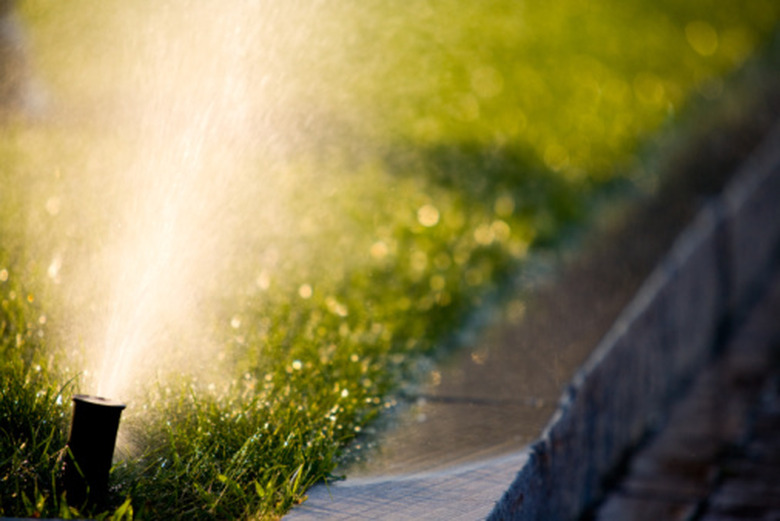How To Build An In-Line Sprinkler Fertilizer System
Using a sprinkler system to deliver fertilizer directly to plants and grass is one of the easiest ways to ensure that important nutrients get applied evenly. Delivering a steady, uniform amount of fertilizer through the water supply can help grow stronger roots and lush, green lawns. Building your own in-line fertilizer system is relatively easy, and requires only a few tools. In-line fertilizer systems can be used on lawns of any size, and can be added to existing sprinkler lines.
Using a sprinkler system to deliver fertilizer directly to plants and grass is one of the easiest ways to ensure that important nutrients get applied evenly. Delivering a steady, uniform amount of fertilizer through the water supply can help grow stronger roots and lush, green lawns. Building your own in-line fertilizer system is relatively easy, and requires only a few tools. In-line fertilizer systems can be used on lawns of any size, and can be added to existing sprinkler lines.
Step 1
Locate the sprinkler manifold. This is usually outside and contained in a green and black box.
Step 2
Open the sprinkler manifold box using your hand.
- Using a sprinkler system to deliver fertilizer directly to plants and grass is one of the easiest ways to ensure that important nutrients get applied evenly.
- In-line fertilizer systems can be used on lawns of any size, and can be added to existing sprinkler lines.
Step 3
Twist the test caps on each valve within the sprinkler manifold to determine which zone you want the automatic fertilizer to be attached to.
Step 4
Turn off the main water valve.
Step 5
Use a wrench to remove the supply line from where it attaches to the valve where the in-line fertilizer is to be attached.
Step 6
Connect the end of the supply line to the output side of the automatic fertilizer device.
Step 7
Screw the intake side of the automatic fertilizer device onto the sprinkler valve.
Step 8
Fill the automatic fertilizer with a quality fertilizer that's designed for use in your model.
Step 9
Turn on the main water line.
- Twist the test caps on each valve within the sprinkler manifold to determine which zone you want the automatic fertilizer to be attached to.
- Screw the intake side of the automatic fertilizer device onto the sprinkler valve.
Step 10
Run the sprinklers and test for leaks.
Move A Sprinkler System Line
Well-designed sprinkler systems make it an easy process to keep a residential lawn green. Landscapers arrange the pipes and sprinkler heads in a way that gives full coverage to an entire yard, allowing the recommended amount of water to soak into the ground each week. Lay out the location for the new sprinkler line. Determine which line needs to move and where the new line needs to go. Measure and draw a diagram. Turn the water to the system off. Cut the old pipe where it needs to be moved using a hacksaw or PVC cutters. Clean the end thoroughly with a rag first, then install the cap with PVC cement and allow it to dry completely. Install any new sprinkler heads in the correct position, if needed. If there are leaks, repair and re-test. Add seed or sod to the dirt over the trenches.
- Run the sprinklers and test for leaks.
- Cut the old pipe where it needs to be moved using a hacksaw or PVC cutters.
Things Needed
- Automatic fertilizer attachment
- Fertilizer
- Wrench
Warning
Only use fertilizer approved for use in an automatic fertilizer.
Tip
If there is not enough room in the sprinkler manifold to accommodate the automatic fertilizer, you may have to dig out the surrounding area and expand the manifold.
